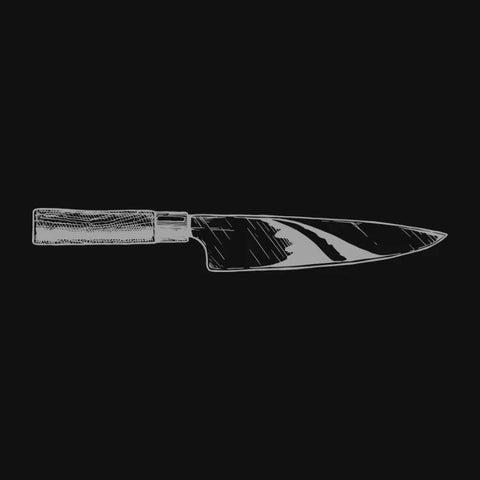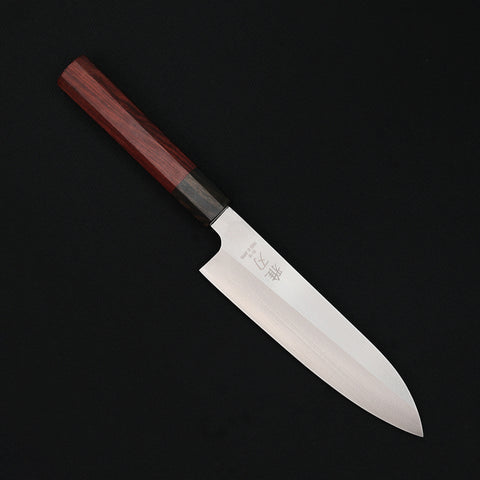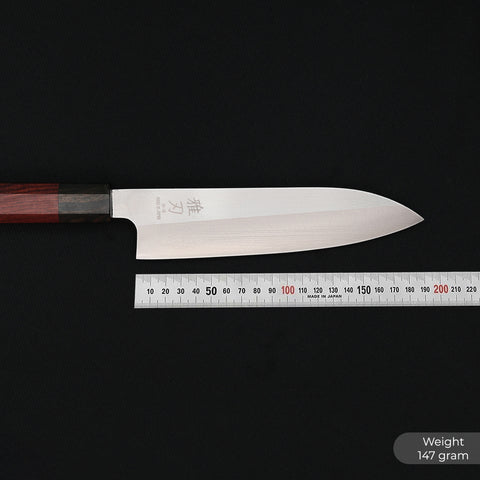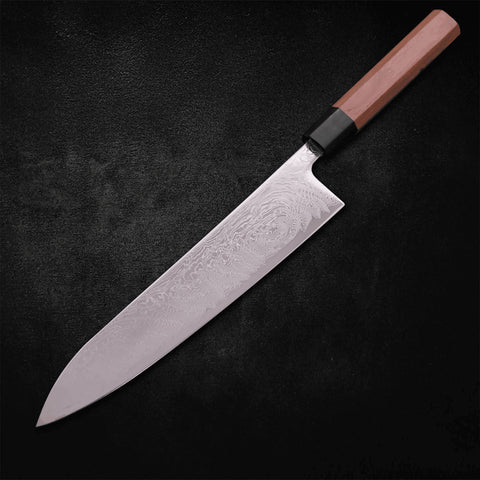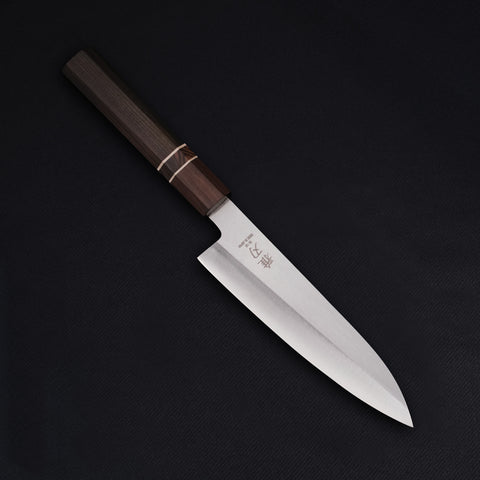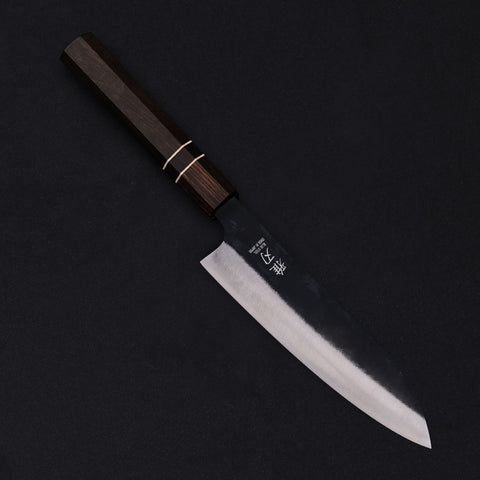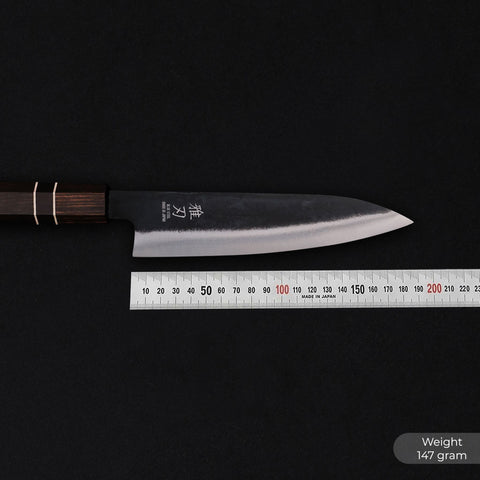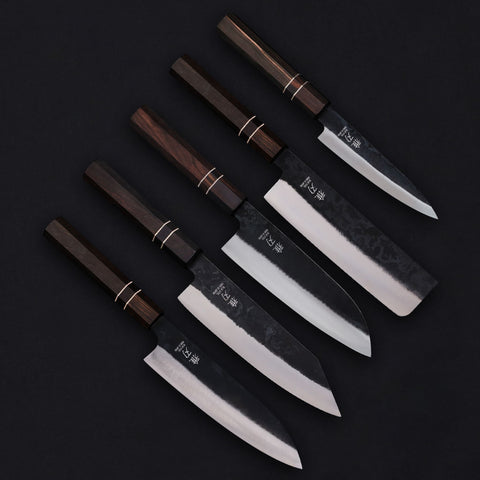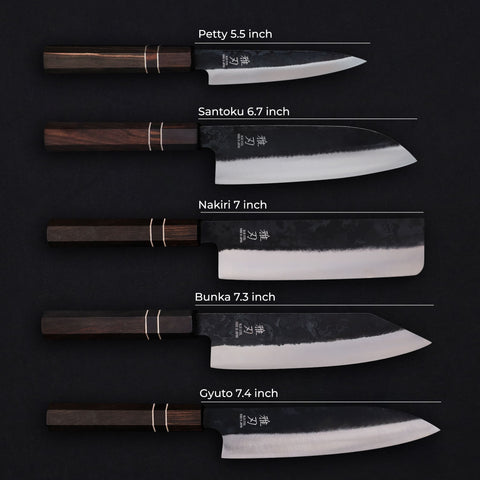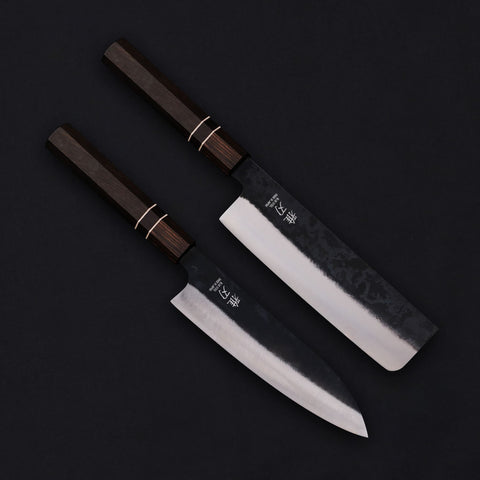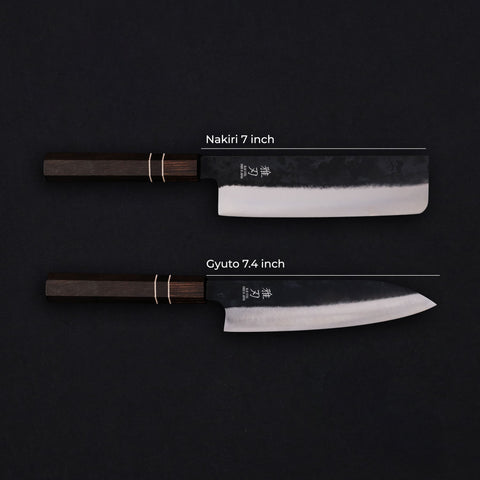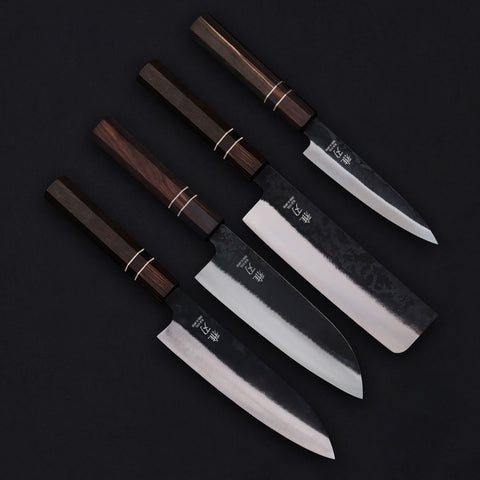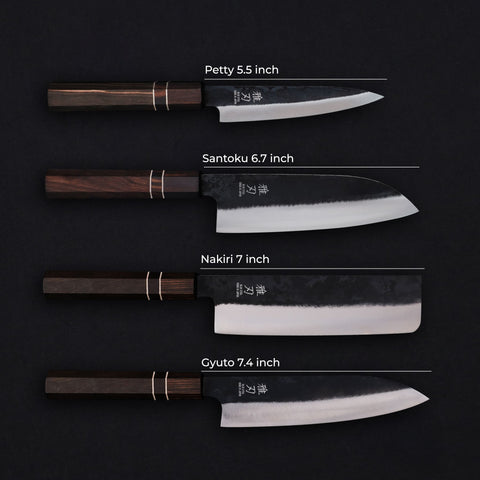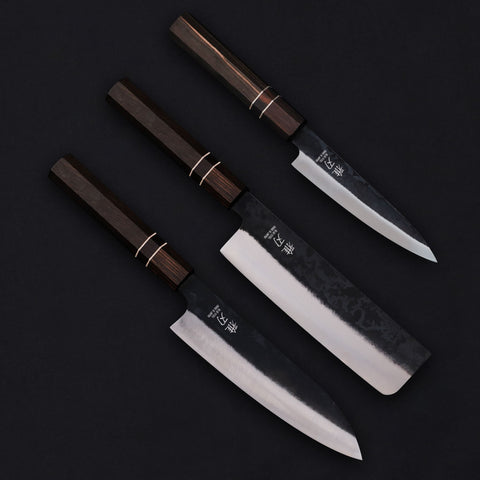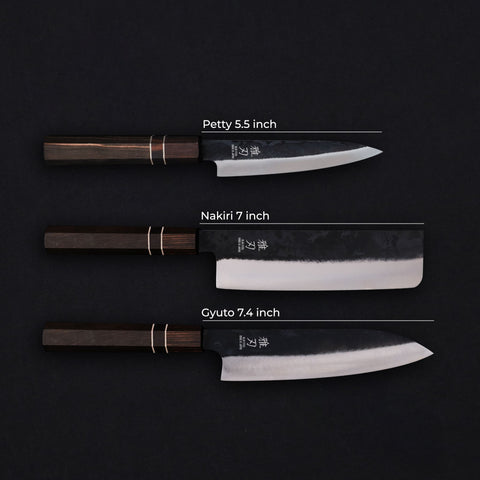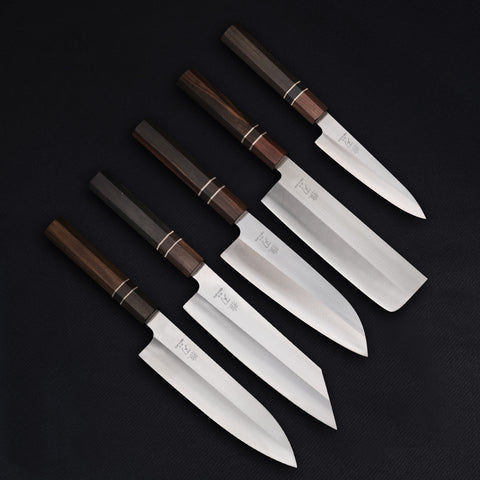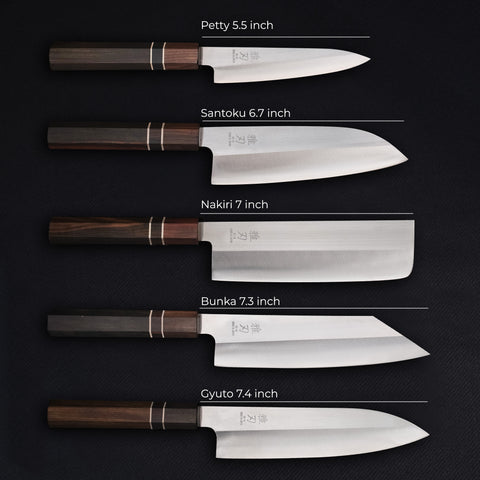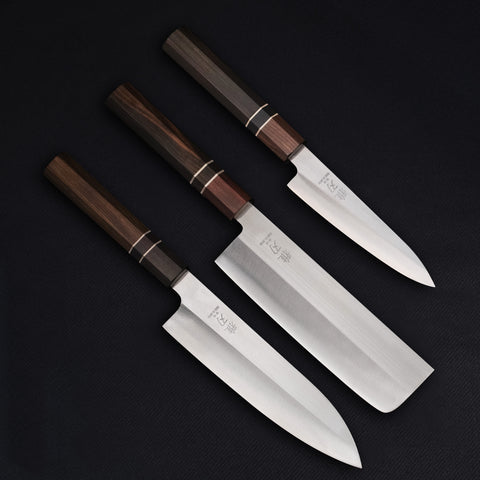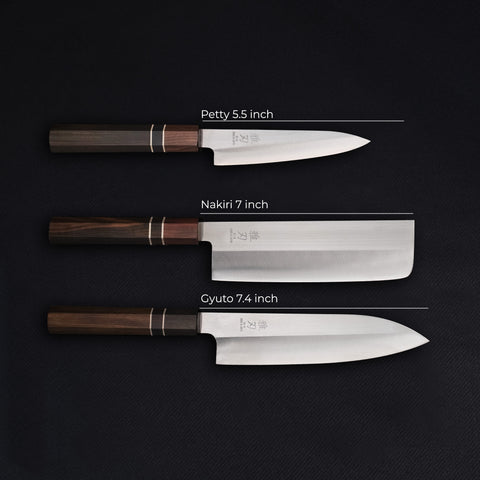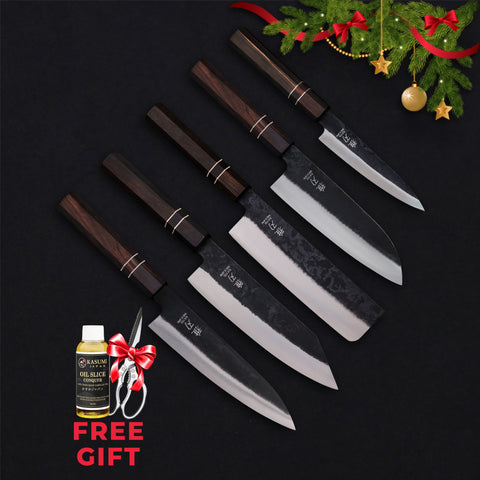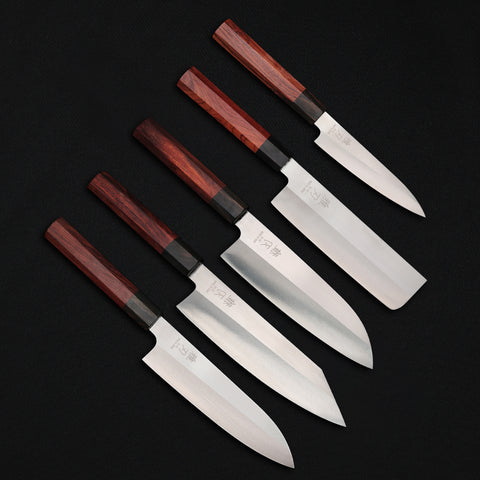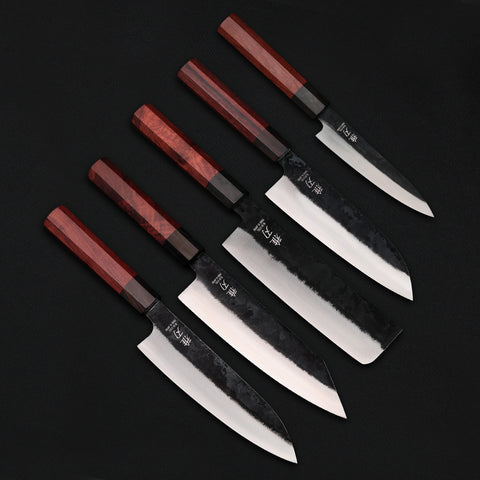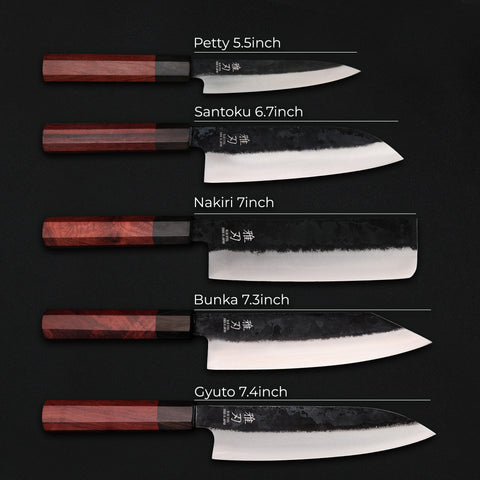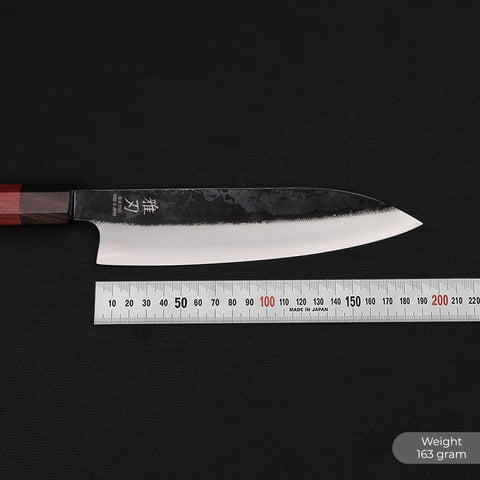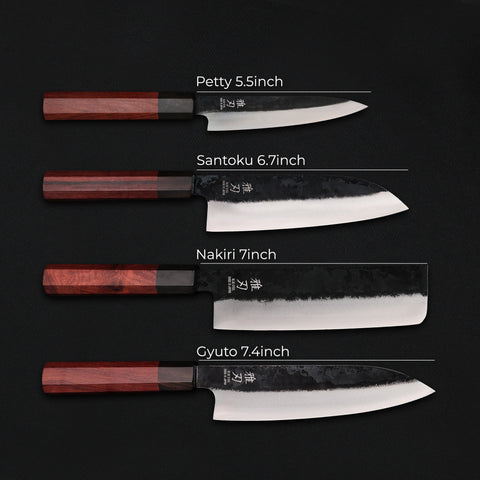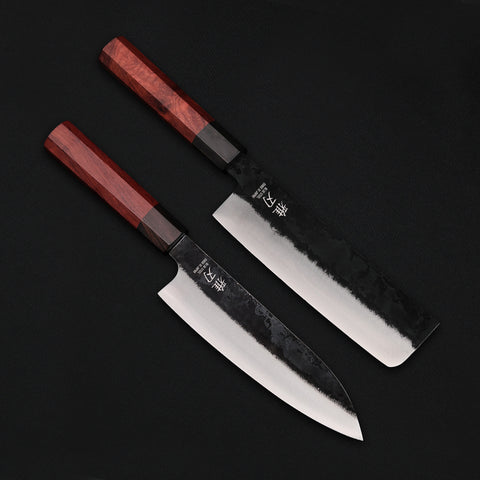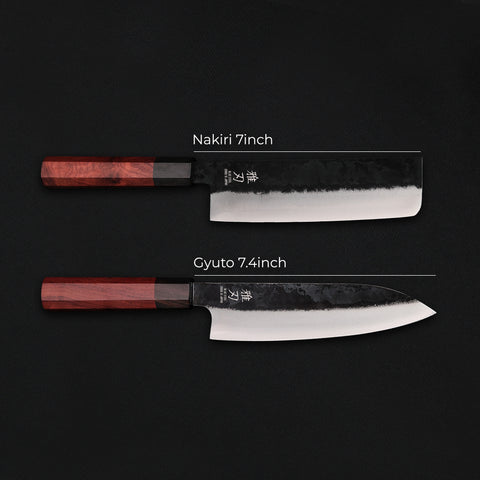1. What Is a Gyuto Knife?
The Gyuto (牛刀) is a double-bevel Japanese chef’s knife that works as an all-purpose tool in the kitchen. It first came from Western butcher knives for slicing meat, but today it handles most daily prep. A Gyuto is great for cutting meat, vegetables, and herbs, but it is not made for bones or frozen food.
Most Gyuto blades are 180-300 mm (7–12 inches) long, with 210 mm (8.3 inches) as a popular, easy-to-use size. The gentle curve of the edge and the sharp tip allow smooth rocking, push, and pull cuts. A taller heel gives knuckle clearance, while different wa or Western handles let cooks choose the balance and grip they prefer.
2. Gyuto Knife Lengths in This Collection
Our Gyuto knives cover a range of lengths to suit different kitchen setups and cutting styles:
- 7.1 Inch Gyuto (~180 mm) : Light and easy to control, ideal for everyday home cooking on medium-sized boards.
- 8.3 Inch Gyuto (~210 mm) : The classic all-round length many chefs use, balancing reach, cutting efficiency, and comfortable rock-chopping.
- 9.5 Inch Gyuto (~240 mm) : A long, powerful blade for confident cooks handling large vegetables, roasts, and high prep volume.
If you want more price-specific options, explore our Best Gyuto Knife Under $100 , Best Gyuto Knife Under $200 , and Best Gyuto Knife Under $500 collections.
3. Steel Types Used in Our Gyuto Knives
Kasumi Japan curates Gyuto knives in a range of Japanese steels so you can choose the balance of sharpness, edge retention, and maintenance that fits your habits:
- Stainless Steel Gyuto Japanese knives : Rust-resistant, easy to maintain, and able to take a clean, durable edge for everyday home cooking.
- Carbon Steel Gyuto Japanese knives : Deliver very sharp edges and responsive cutting feedback, ideal for cooks who enjoy regular sharpening and patina care.
- Blue Steel Gyuto Japanese knives : Use ultra-hard Blue Steel for extreme edge retention and crisp cutting feel, suited to experienced users who want maximum sharpness from their main Gyuto.
Each product page details the exact steel, hardness (HRC), cladding, and finish so you can compare how every Gyuto will feel and perform in your kitchen.
4. How to Choose the Right Gyuto for Your Kitchen
When choosing a Gyuto knife from this collection, consider:
- Experience level: Stainless or semi-stainless steels suit busy home cooks; harder carbon steels reward enthusiasts who sharpen often.
- Board size and space: 190–210 mm works well in compact kitchens, while 240 mm shines on larger boards and in professional settings.
- Handle style: Lightweight Japanese wa-handles favor a pinch grip and reduce fatigue over long prep sessions.
- Preferred maintenance: If you prefer low-maintenance, choose stainless; if you enjoy sharpening and patina, consider carbon steel Gyuto knives.
If you prefer a shorter, more compact all-rounder, you can also compare with our Bunka knife collection .
5. Why Buy Your Gyuto Knife from Kasumi Japan?
- Curated makers from Japan: We work with craftsmen and workshops in Japan who specialize in kitchen knives rather than mass production.
- Transparent specifications: Each listing explains steel type, hardness, cladding style, grind, handle material, and recommended use.
- Balanced selection: Options for both home cooks and professionals, from first upgrade Gyuto knives to higher-end, harder steels.
- Support and guidance: Our in-depth guides on Gyuto knife history, use, and care help you get the best performance from your blade.
Gyuto Knives FAQs
A Gyuto is an all-purpose chef’s knife for slicing meat, chopping vegetables, mincing herbs, and general prep. It can replace or complement a Western chef’s knife in most kitchens.
Most cooks start with a 210 mm Gyuto as a versatile, balanced length. Choose 190–200 mm if you have limited board space or prefer a smaller knife, and 240 mm if you want extra reach and handle high prep volume.
A Gyuto typically has a thinner blade and finer edge than many Western chef’s knives, giving a sharper, more precise cutting feel. However, it also requires proper technique and regular sharpening to keep that performance.
Hand-wash and dry your Gyuto immediately after use, avoid dishwashers and glass or stone cutting boards, and store it on a magnetic rack, in a saya, or in a knife block. Carbon steel Gyuto knives also benefit from a light coat of oil and regular patina development.

